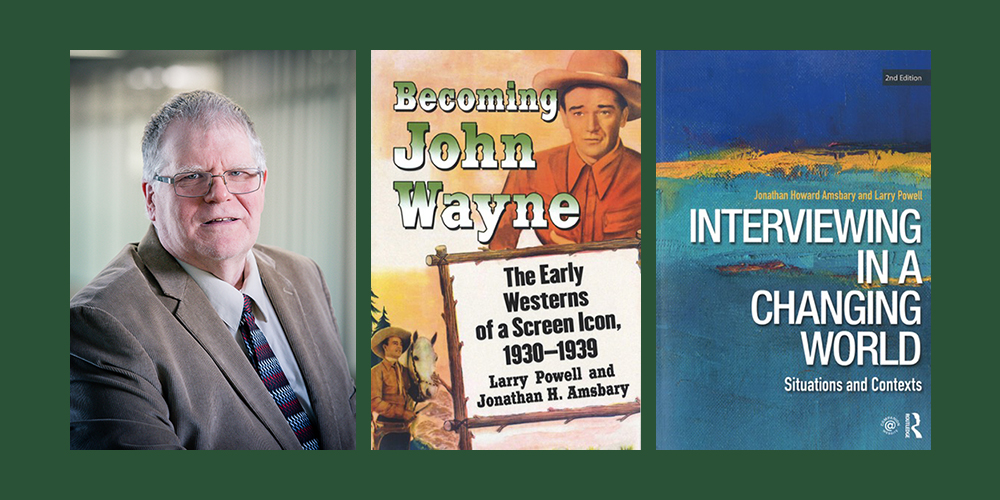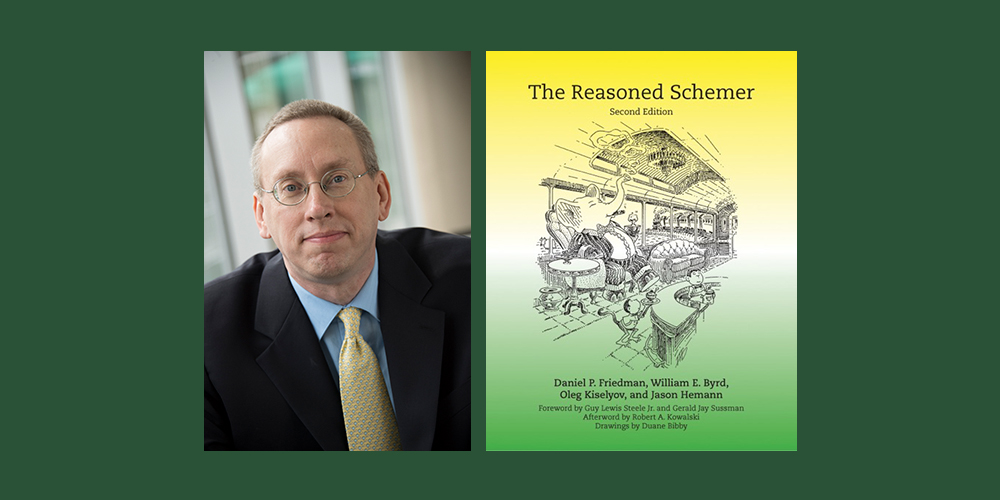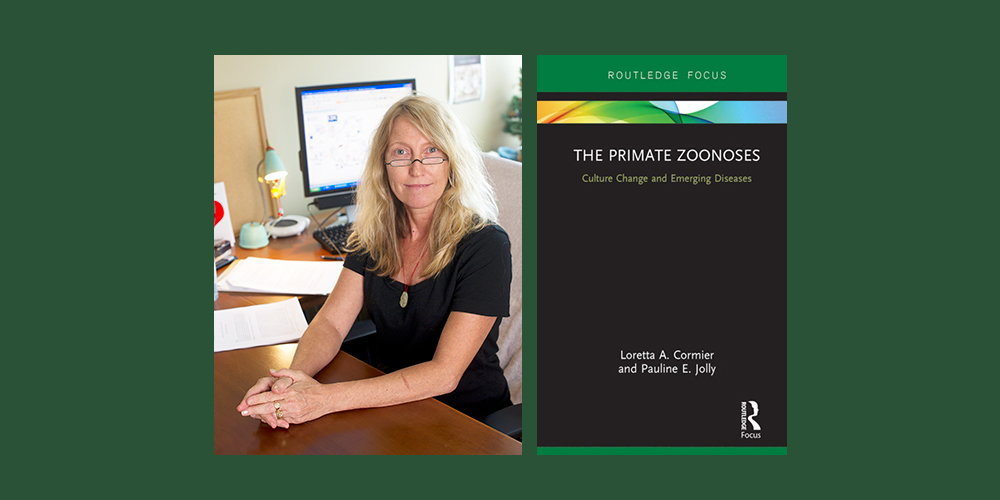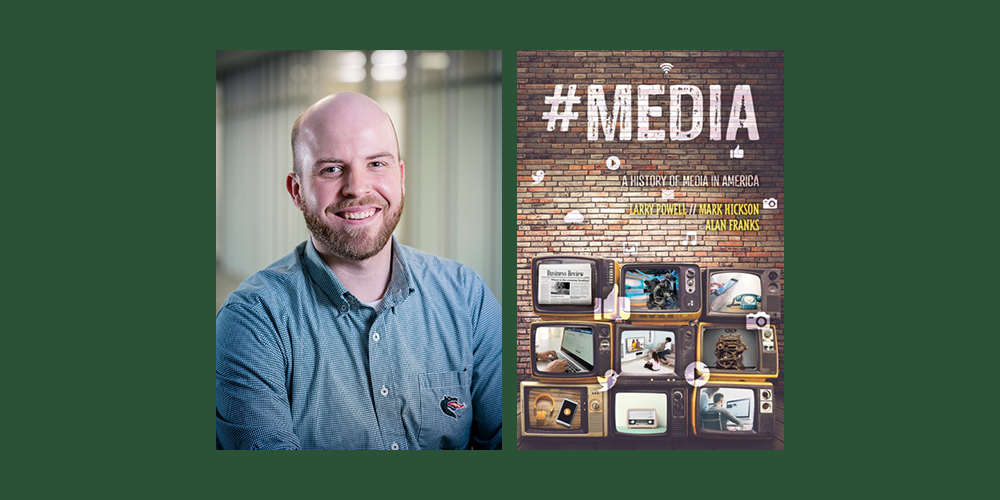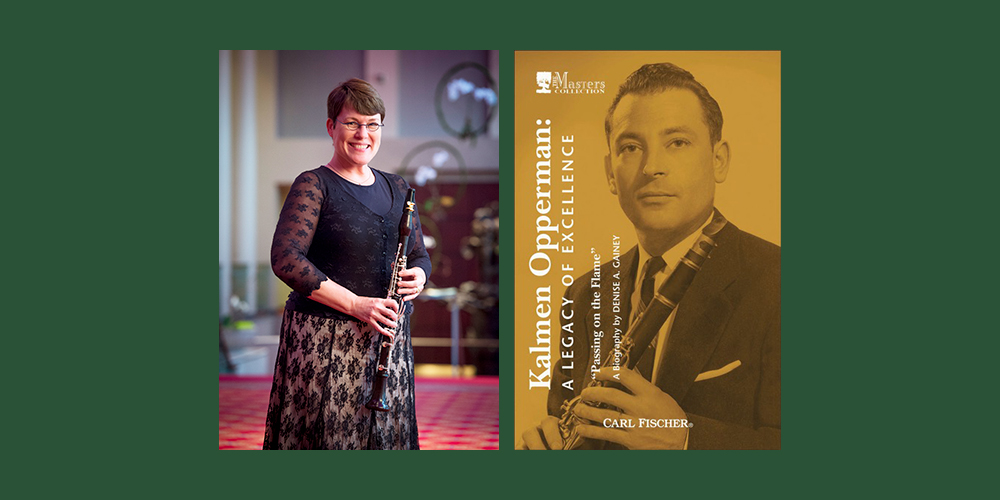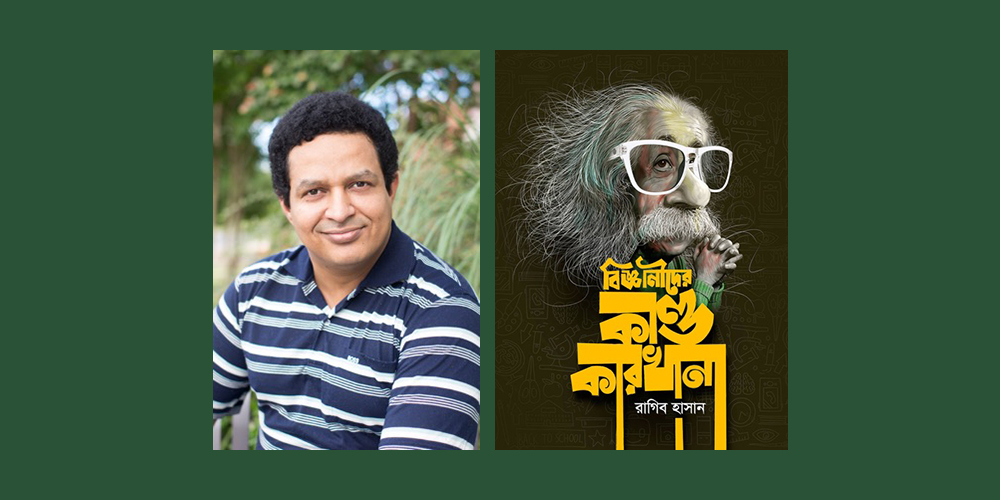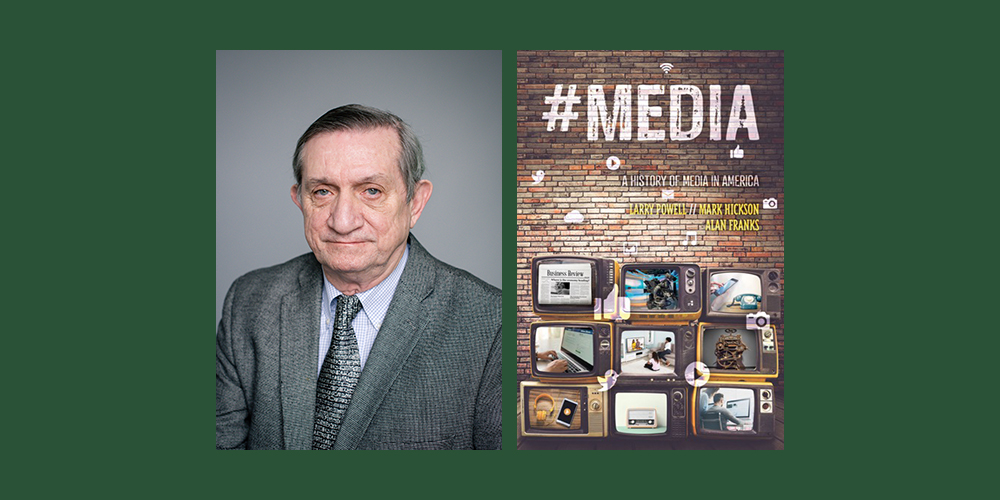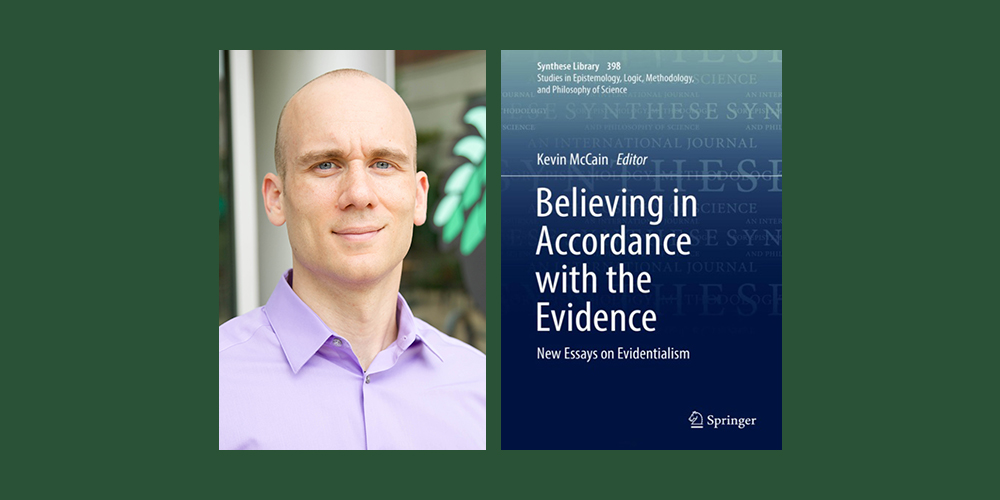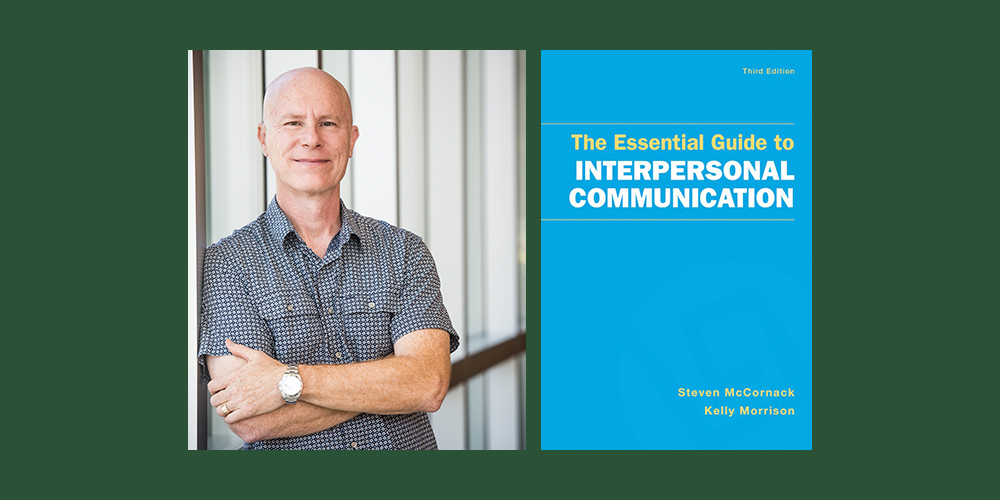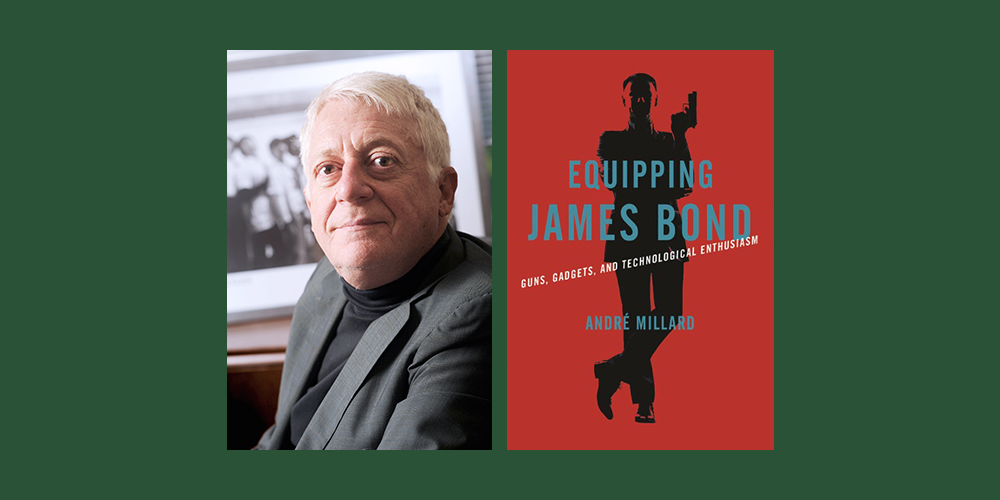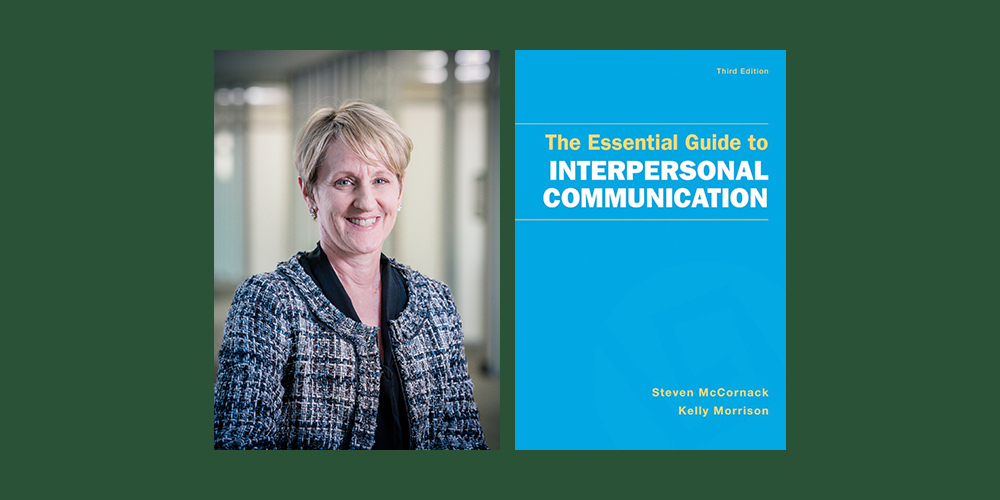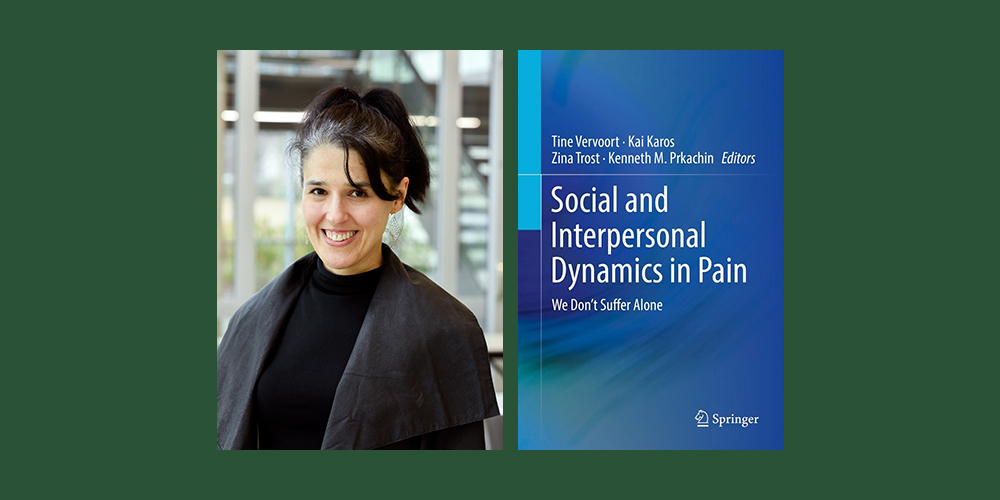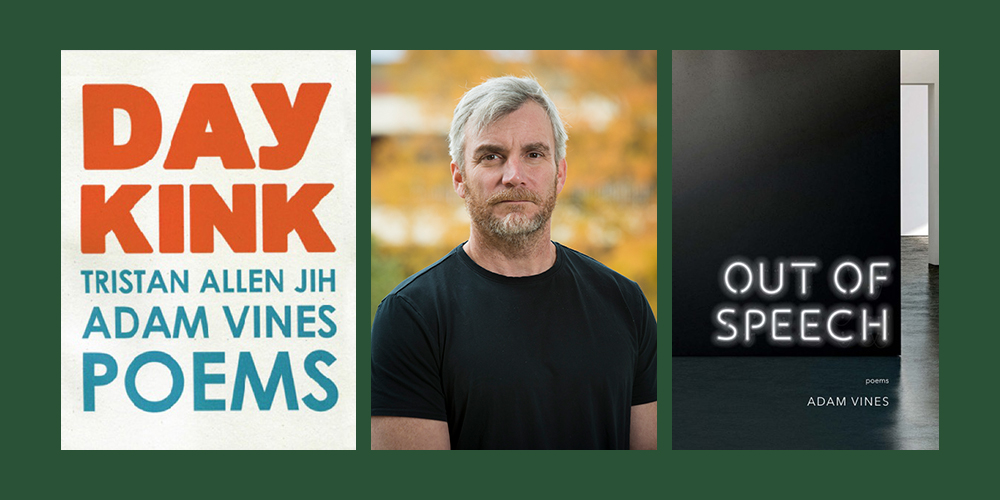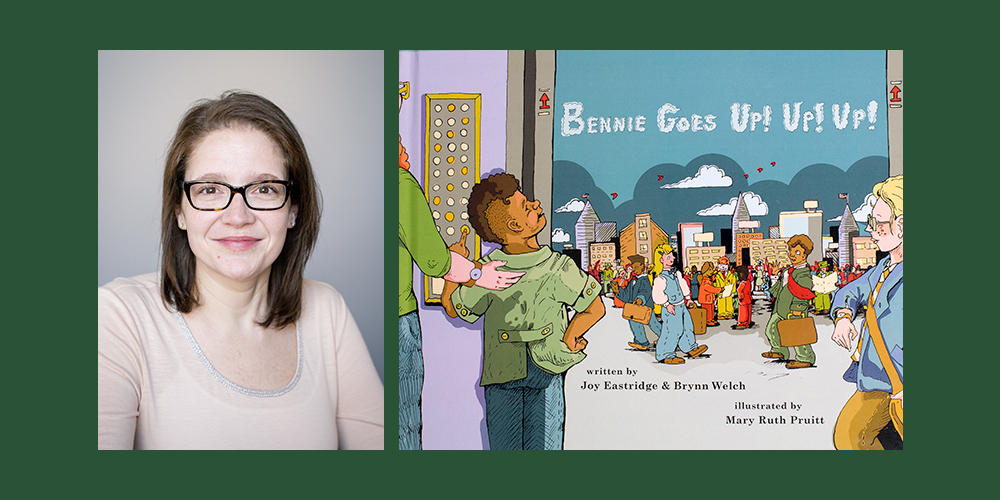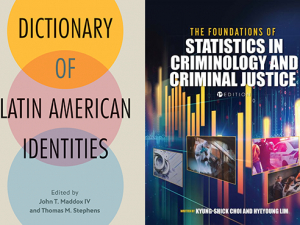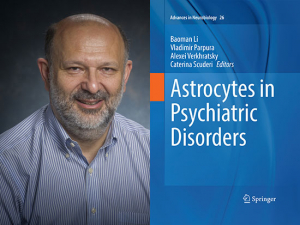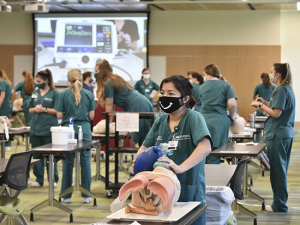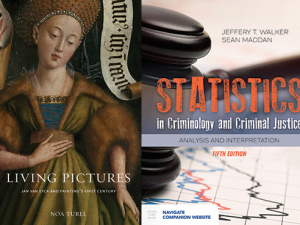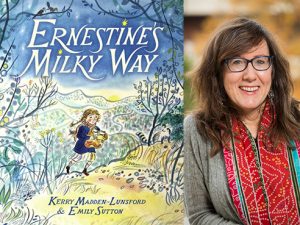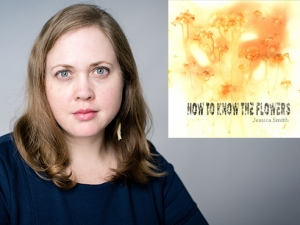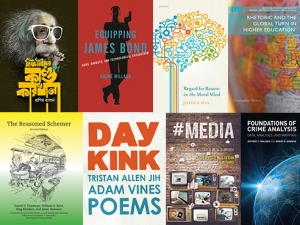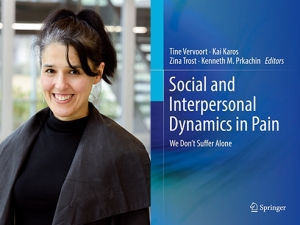Writing a book is no small feat, and the faculty in the College of Arts and Sciences are taking the publishing world by storm. Twenty-three faculty from the departments of anthropology, biology, chemistry, communication studies, computer science, criminal justice, English, history, music, philosophy and psychology wrote books of poetry and children’s books plus texts about tech in James Bond fiction, globalism in higher education and the behavioral science of peace.
Click through the slideshow below to learn more about each book.
- Jonathan Amsbary, Ph.D.
- Will Byrd, Ph.D.
- Loretta Cormier, Ph.D.
- Alan Franks, MFA
- Denise Gainey, DMA
- Hayden Griffin, Ph.D.
- Ragib Hasan, Ph.D.
- Mark Hickson, Ph.D.
- Josh May, Ph.D.
- Kevin McCain, Ph.D.
- Steve McCornack, Ph.D.
- Andy Millard, Ph.D.
- Chris Minnix, Ph.D.
- Kelly Morrison, Ph.D.
- Larry Powell, Ph.D.
- Trygve Tollefsbol, Ph.D., D.O.
- Zina Trost, Ph.D.
- Peter Verbeek, Ph.D.
- Adam Vines, MFA
- Sergey Vyazovkin, Ph.D.
- Jeff Walker, Ph.D.
- Brynn Welch, Ph.D.
-
Jonathan Amsbary, Ph.D.
Professor, Department of Communication Studies
“Interviewing in a Changing World”
Co-authored with Larry Powell, Ph.D., a fellow professor in the department, the second edition of “Interviewing in a Changing World,” published by Routledge, can help students develop strong interview skills for various situations and contexts — from job interviews to persuasive interviews, performance and appraisal interviews and media interviews for radio, television, newspapers and political reporting. It also includes two chapters on interview skills needed for qualitative and quantitative research.
“Becoming John Wayne: The Early Westerns of a Screen Icon, 1930-1939”
Also co-authored with Powell, “Becoming John Wayne,” published by McFarland & Co., explores the early movies of screen legend John Wayne, from his first starring role in “The Big Trail” to his breakthrough in John Ford’s “Stagecoach.” Amsbary and Powell trace the actor’s transformation into the carefully crafted film persona that made him famous. -
Will Byrd, Ph.D.
Researcher, Department of Computer Science
“The Reasoned Schemer”
The second edition of “The Reasoned Schemer,” published by The MIT Press, explores ways to implement a relational programming language in scheme or any other functional language and demonstrates the remarkable flexibility of the resulting programs. This edition features simplified programming language and explicit rules to ease translations of scheme functions into relations. -
Loretta Cormier, Ph.D.
Associate Professor, Department of Anthropology
“The Primate Zoonoses: Culture Change and Emerging Diseases”
Co-authored with Pauline Jolly, Ph.D., professor in UAB’s Department of Epidemiology, “The Primate Zoonoses,” published by Routledge, offers an accessible and up-to-date reference on primate zoonoses, infectious diseases spread between primates and humans. Recent years have seen a rise in human diseases zoonotically transferred from animals, and wild primates are implicated in the spread of numerous newly emerging infections. The book goes beyond providing just an inventory of diseases and helps readers understand how and why they are transmitted, with consideration given to the contemporary cultural and ecological factors. -
Alan Franks, MFA
Assistant Professor, Department of Communication Studies
“#Media: A History of Media in America”
Co-authored with Department of Communication Studies professors Larry Powell, Ph.D., and Mark Hickson, Ph.D., and published by Kendell Hunt, “#Media” is a comprehensive look at the history of mass media, from the beginning of writing to modern social media and includes discussion of the history of telegraphs, telephones, newspapers, film, radio and television. -
Denise Gainey, DMA
Professor, Department of Music
“Kalmen Opperman: A Legacy of Excellence”
“Kalmen Opperman,” published by Carl Fischer Music, combines interviews with the American clarinetist’s former students with personal essays and reflections from those closest to the master teacher and performer; Gainey was a longtime student and research colleague. The book explores Opperman’s life, pedagogy and contributions to the clarinet’s canon. -
Hayden Griffin, Ph.D.
Associate Professor, Department of Criminal Justice
“Routledge Handbook of Corrections in the United States”
Co-authored with the University of West Georgia’s Vanessa Woodward, Ph.D., the “Routledge Handbook of Corrections in the United States,” published by Routledge, brings together original contributions from leading scholars in criminology and criminal justice to provide an in-depth, state-of-the-art look at the most important topics in corrections. The book discusses the foundations of U.S. corrections, philosophical issues that guided historical movements in the field, varying types of punishment and supervision, among other things, and is an essential reference for both students and academicians and practitioners working in corrections and related agencies. -
Ragib Hasan, Ph.D.
Associate Professor, Department of Computer Science
“Amazing Stories of Scientists”
“Amazing Stories of Scientists” includes interesting anecdotes about scientists and mathematicians, born out of bedtime stories Hasan told to his 7-year-old son — about an absent-minded Albert Einstein, how a melted pack of chocolates led to the invention of the microwave, how Thomas Edison was kicked out of school for being ‘dim-witted’ and how Charles Friedrich Gauss once pranked his kindergarten teacher with his mathematical prowess. The goal of “Amazing Stories of Scientists” is to show children that science is fun. -
Mark Hickson, Ph.D.
Professor, Department of Communication Studies
“#Media: A History of Media in America”
Co-authored with Department of Communication Studies Professor Larry Powell, Ph.D., and Assistant Professor Alan Franks, and published by Kendell Hunt, “#Media” is a comprehensive look at the history of mass media, from the beginning of writing to modern social media and includes discussion of the history of telegraphs, telephones, newspapers, film, radio and television. -
Josh May, Ph.D.
Associate Professor, Department of Philosophy
“Regard for Reason in the Moral Mind”
“Regard for Reason in the Moral Mind,” published by Oxford University Press, is an accessible defense of the rationality of moral thought and action and rebuts the scientific debunking of morality, engaging critically with both the science and philosophy of morality. -
Kevin McCain, Ph.D.
Associate Professor, Department of Philosophy
“Believing in Accordance with the Evidence: New Essays on Evidentialism”
“Believing in Accordance with the Evidence,” published by Springer and edited by McCain, explores evidentialism, a major theory of epistemic justification, and contains more than 20 papers examining its nuances, challenges and future directions written by leading and up-and-coming epistemologists. The book includes insightful discussion on such issues as the ontology of evidence, phenomenal dogmatism, how experiences yield evidence, the new evil demon problem probability and more. -
Steve McCornack, Ph.D.
Professor, Department of Communication Studies
“The Essential Guide to Interpersonal Communication”
Co-authored with department Professor Kelly Morrison, Ph.D., and published by Bedford/St. Martin’s, “The Essential Guide to Interpersonal Communication” is the third edition of a brief and inexpensive supplemental text designed for combination with other guides for larger survey courses. The guide is up-to-date on today’s interpersonal scholarship and includes experiential examples and quizzes to engage students in self-reflection. -
Andy Millard, Ph.D.
Professor, Department of History
“Equipping James Bond: Guns, Gadgets and Technological Enthusiasm”
In “Equipping James Bond,” Millard chronicles the hundred-year history of espionage technology through the lens of Ian Fleming’s infamous character James Bond and his ingenious spyware. Beginning with the creation of MI6, the Secret Intelligence Service, Millard traces the development of espionage tech from 19th-century weaponry to the evolving threat of computer hacking and surveillance and describes how Bond transitions from protecting 1950s England from criminal activity to saving a world threatened by nuclear bombs, poison gas and attacks from space. -
Chris Minnix, Ph.D.
Associate Professor, Department of English
“Rhetoric and the Global Turn in Higher Education”
Drawing on an analysis of the way discourses of security, economy and ethics shape the rhetoric of global higher education and that of its populist and nationalist critics, “Rhetoric and the Global Turn in Higher Education” studies the role of rhetoric in the expansive movement for global higher education in the United States and will appeal to scholars and students of rhetoric and composition studies, communication and education plus faculty and administrators working in global higher education or internationalization programs. -
Kelly Morrison, Ph.D.
Professor, Department of Communication Studies
“The Essential Guide to Interpersonal Communication”
Co-authored with department Professor Steve McCornack, Ph.D., and published by Bedford/St. Martin’s, “The Essential Guide to Interpersonal Communication” is the third edition of a brief and inexpensive supplemental text designed for combination with other guides for larger survey courses. The guide is up-to-date on today’s interpersonal scholarship and includes experiential examples and quizzes to engage students in self-reflection. -
Larry Powell, Ph.D.
Professor, Department of Communication Studies
“Political Campaign Communication: Inside and Out”
Co-authored with retired political consultant J. Cowart, the second edition of “Political Campaign Communication,” published by Pearson, examines the intricacies of political campaigning through the eyes of academia and political consulting. The book discusses theories and principles, political socialization and the roles of money, ethics and critical events.
“#Media: A History of Media in America”
Co-authored with Department of Communication Studies Professor Mark Hickson, Ph.D., and Assistant Professor Alan Franks, and published by Kendell Hunt, “#Media” is a comprehensive look at the history of mass media, from the beginning of writing to modern social media and includes discussion of the history of telegraphs, telephones, newspapers, film, radio and television.
“Interviewing in a Changing World”
Co-authored with Jonathan Amsbary, Ph.D., a fellow professor in the department, the second edition of “Interviewing in a Changing World,” published by Routledge, can help students develop strong interview skills for various situations and contexts — from job interviews to persuasive interviews, performance and appraisal interviews and media interviews for radio, television, newspapers and political reporting, plus two full chapters on interview skills needed for qualitative and quantitative research.
“Becoming John Wayne: The Early Westerns of a Screen Icon, 1930-1939”
Also co-authored with Amsbary, “Becoming John Wayne,” published by McFarland & Co., explores the early westerns of screen star John Wayne, from his first starring role in “The Big Trail” to his breakthrough in John Ford’s “Stagecoach.” Powell and Amsbary trace the actor’s transformation into the carefully crafted film persona that made him famous. -
Trygve Tollefsbol, Ph.D., D.O.
Professor, Department of Biology
“Epigenetics in Human Disease”
The second edition of “Epigenetics in Human Disease,” published by Academic Press, examines the diseases and conditions — such as cancer, autoimmune disorders and aging — researchers and clinicians know have epigenetic factors, plus diabetes, neurobiological disorders and cardiovascular disease, which are yielding exciting breakthroughs in the field. With its translational focus, “Epigenetics” will is a valuable reference for both scientists and clinicians. -
Zina Trost, Ph.D.
Assistant Professor, Department of Psychology
“Social and Interpersonal Dynamics in Pain: We Don’t Suffer Alone”
Trost’s book “Social and Interpersonal Dynamics in Pain: We Don’t Suffer Alone” is an international collaboration co-edited by Tine Vervoort, Ph.D., research professor at Ghent University in Belgium, Kai Karos, a doctoral student the Katholieke Universiteit Leuven in Belgium, and Kenneth Prkachin, professor emeritus of psychology at the University of Northern British Columbia. The book explores new research that acknowledges that pain occurs in a social context; while not a new concept in psychology or behavioral therapies, it is a newcomer to mainstream pain research. “Social and Interpersonal Dynamics in Pain” takes work from the top pain researchers studying these new developments and compiles it into one volume, designed to keep readers up-to-date on the trends.
Read more in the UAB Reporter. -
Peter Verbeek, Ph.D.
Associate Professor, Department of Anthropology
“Peace Ethology: Behavioral Processes and Systems of Peace”
With contributions from experts representing a variety of scholarly fields, from philosophy to economics, “Peace Ethology,” published by Wiley-Blackwell, offers social-psychological perspective on the causation of peaceful behavior, information on children’s peacekeeping and peacemaking, ideas for overcoming social tensions for police and civilians and recent thinking on the behavioral science of peace. Written for students and academics of the behavioral and social sciences, the book explores the development, nature and current state of peace. -
Adam Vines, MFA
Associate Professor, Department of English
“Day Kink”
Co-authored with Cirque du Soleil’s The Beatles LOVE show aerialist Tristan Allen Jih and published by Unicorn Press, “Day Kink” explores the unusual, small, out-of-place details of modern life, such as a mother impersonating Gene Simmons, or a suitcase dumped into a river. Reviewers have called its poems “memorials to those beloved suburban otherworlds” and the book a “freaky burlesque show.”
“Out of Speech”
Grounded in technical mastery, the poems in “Out of Speech,” published by LSU Press, explore themes of exile, family, disease, desire and isolation through 20th and 21st century painters such as Picasso, Hopper, Rothko, de Kooning, Warhol, Lichtenstein and Artschwager. Vines also explores characters set in present-day museums, such as a bored docent to a misinformed “explainer” of an artwork’s meaning. By combining those two perspectives, “Out of Speech” provides insights into the complexity of being human. -
Sergey Vyazovkin, Ph.D.
Professor, Department of Chemistry
“Handbook of Thermal Analysis and Calorimetry: Recent Advances, Techniques and Applications”
The sixth edition of the handbook, co-edited with Hiroshima University’s Nobuyoshi Koga, Ph.D., and the University de Rostock’s Christoph Schick and published by Elsevier Science, covers recent advances in techniques and applications that complement earlier volumes. After recent years yielded tremendous progress in the field, “Handbook of Thermal Analysis” compiles 19 chapters on high-impact topics such as biomass conversion, sustainable polymers, nonmetallic glasses and phase change materials and provides a broad overview of recent progress in the field. -
Jeff Walker, Ph.D.
Professor and Chair, Department of Criminal Justice
“Foundations of Crime Analysis: Data, Analyses and Mapping”
Co-authored with the University of Arkansas’ Grant Drawve, Ph.D., and published by Routledge, “Foundations of Crime Analysis” offers a theoretical and methodological introduction to crime analysis, covering its theoretical roots and development of the profession, pertinent statistical methods, spatio-temporal applications and the intersection of crime analysis and police work. It features case studies and specific examples and has a companion website with more resources for students. -
Brynn Welch, Ph.D.
Assistant Professor, Department of Philosophy
“Bennie Goes Up! Up! Up!”
Inspired by the adoption of the author’s 5-year-old son, “Bennie,” which is self-published, follows the adventures of Bennie and his dreams of soaring and reaching for the stars. The book is full of details not often present in popular children’s literature; much like the real-life family that inspired them, the book’s mother-son duo is unconventional, with her red hair and his dark skin. The goal of “Bennie” is to provide a more realistic depiction of the world the authors and illustrators saw daily — full of people with varied family structures, abilities and skin colors.
Read more in the UAB Reporter.
